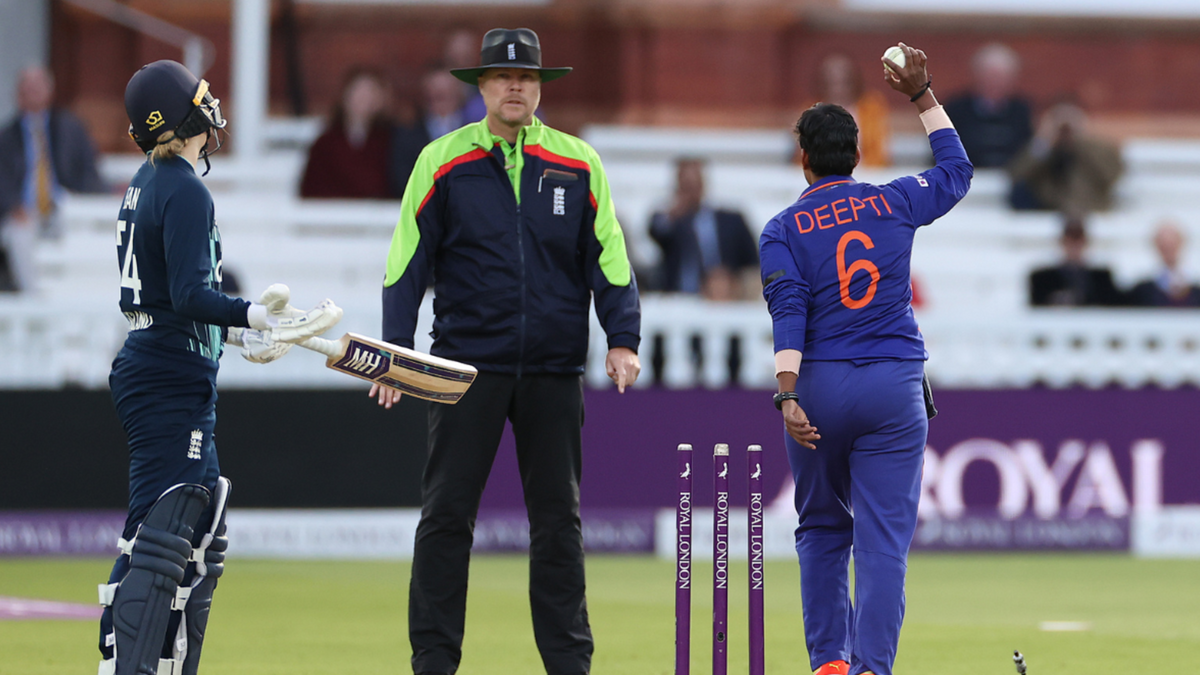
The 2023 edition of the Wisden Cricketers’ Almanack has called for a change to the laws around pre-delivery run outs, proposing the umpire calls ‘one short’ when the non-striker prematurely leaves the crease.
‘One short’ is usually called when a batter fails to ground their bat behind the crease when taking a run. By failing to ground the bat behind the line, the run is incomplete and therefore is not added to the team or individual total. In the case of pre-delivery calls, the Almanack proposes that implementing this practice would stop the non-striker from stealing any ground before the ball is bowled and would not deprive spectators of enthralling battles between the batter and bowler.
In international matches, it would be up to the TV official, who is already checking the bowler’s front foot, to monitor non-striker transgressions. For lower levels of the game and club cricket, it would be up to the umpire at the bowler’s end to spot infringements of the law.
“Simply, the umpire calls ‘one short’ every time the non-striker strays too early from the crease (and a run is taken),” Wisden Almanack editor Lawrence Booth writes in his editor’s notes. “In international matches, the TV official is already monitoring the front line for no-balls, so watching the batter too should be straightforward. In club games, the umpire should be able to spot the blatant transgressions, which are the ones that matter at that level. Batters would soon become more watchful, and bowlers could concentrate on the striker’s end.”
Controversy over pre-delivery run outs has never been far from cricket’s headlines since Deepti Sharma enacted the dismissal against Charlie Dean in India’s final ODI against England last summer. Since then, several high-profile incidents in franchise leagues around the world have led some of the most high-profile names in the game to air their views on the subject. In a Twitter exchange with Indian journalist Harsha Bhogle last week, Ben Stokes proposed a penalty-run system to police non-strikers rather than allowing the bowler to take the bails off when they stray from the crease.
In January of this year, the MCC issued an amendment to the wording of Law 38 after an incident in the Big Bash League where Adam Zampa attempted to run out Tom Rogers.
The amendment was implemented in order to clarify at what point in their delivery the bowler is allowed to enact a non-striker run out, given the confusion over whether a bowler could do so after their arm had passed the vertical point in their action.
Law 38.3.1.1 now reads: “The instant when the bowler would normally have been expected to release the ball is defined as the moment the bowler’s arm reaches the highest point of his/her normal bowling action in the delivery swing.”
A second additional clause to the main law read: “Even if the non-striker had left his/her ground before the instant at which the bowler would normally have been expected to release the ball, once the bowler has reached that point it is no longer possible for the bowler to run out the non-striker under this Law.”
The Almanack says that while this change was a “well-meaning attempt to nail the moment in a bowler’s action when the dismissal ceases to be valid,” the solution proposed in this year’s publication is an easier fix which will put an end to the controversy around the method of dismissal.
The Almanack also proposes two other law changes. The first suggests that if a batter retires out for tactical reasons, the following delivery should be considered a dot ball.
“The regulations need a tweak,” Booth writes. “Bowlers don’t have the option of not completing an over, unless they are injured, so why are batters allowed to cut short an innings with impunity? If they want to walk off, their departure should count as a delivery. One of cricket’s fascinations is watching problems being solved on the go. Passing the buck, without consequence, is no answer.”
The second argues that boundary efforts such as the one pulled off by Michael Neser in the BBL earlier this year should be given as six, rather than being permitted in the laws. Neser took off from within the field of play, but took a second touch in the air having both taken off and landed outside the field of play, before jumping back into play to complete the catch.
“For all his ingenuity, Neser had engaged with the ball beyond the boundary for an uncomfortable length of time,” Booth writes. “It was all perfectly legal, as MCC confirmed. But if a fielder’s second contact with the ball takes place entirely – and obviously – outside the rope, hasn’t control been lost? Silk deserved six.”
The 2023 edition of the Wisden Cricketers’ Almanack is out now








